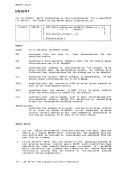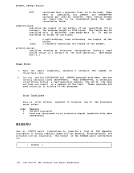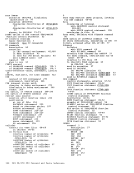leaves the tape positioned at the end of the file at
the end of a function.
1.
displayed and the tape will rewind and unload regardless of options
2. If DDR is executed from
the disk device (or both) to your virtual machine prior to invoking
the input/output statement causes the following response to be
displayed:
machine only) to describe the printer that is to print data extents
specified by the
cylinder extents from the
command under
of the
r----------------------------------------------------------------------,
The function commands also describe the extents to be dumped.
restored. The format of the
r----------------------------------------------------------------------,
onto a magnetic tape or tapes. The data is moved cylinder by
cylinder. Any number of cylinders may be moved. The format
of the resulting tape is:
describing the volumes.
record, consisting of data
fields to restore the
written on tape. After the last count field the record
contains key and data records to fill the 4K buffer.






















































































































































































































































































































































































































